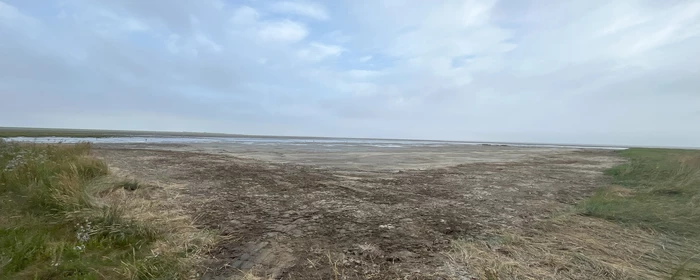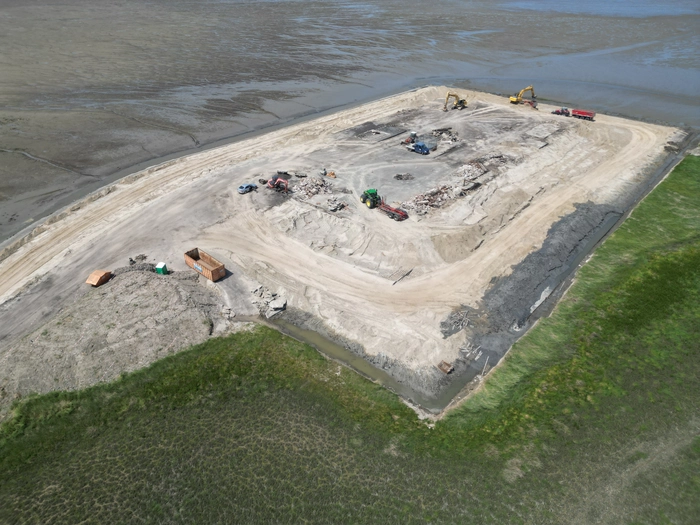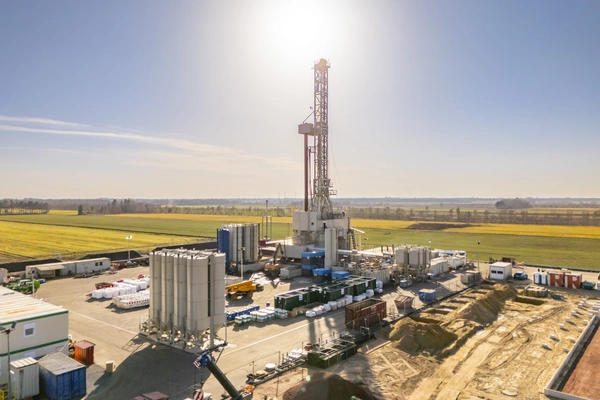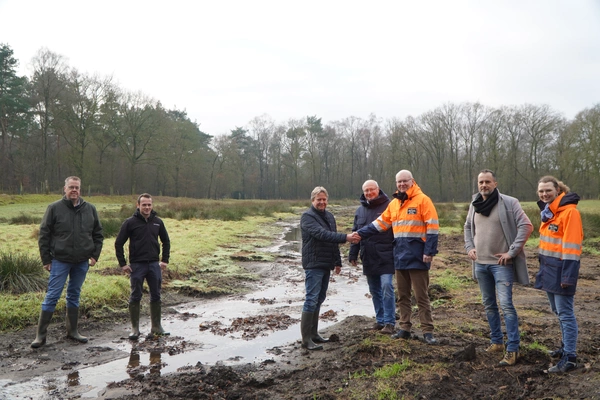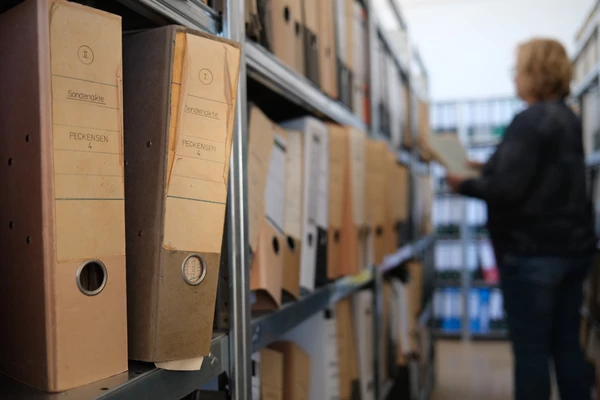Gas production platform in Lower Saxony's Wadden Sea National Park completely dismantled
Greetsiel/Krummhörn, The raw materials company Neptune Energy and Deichacht Krummhörn are restoring the natural state of the Leybucht and using material for dyke construction.
For almost half a century, a gas extraction platform stood on the coast of East Frisia and thus in the middle of the quiet zone of the later established national park, whose remaining structures have now been completely dismantled by the operator. This has closed a gap in the UNESCO Wadden Sea World Heritage Site in Leybucht, one of the few remaining large bays on the Wadden Sea coast with its special significance for habitats and species. The construction material that was removed was used to reinforce the nearby dyke as part of climate change adaptation measures. "We are delighted that the original and characteristic salt marsh nature of the national park here in the Leybucht can once again unfold unimpeded and that its positive impact on nature and people is becoming visible. By allowing nature to be nature, we are strengthening the naturalness and diversity of this unique habitat, which has been recognised as a World Heritage Site," explains Peter Südbeck, Head of the Lower Saxony Wadden Sea National Park Authority.
In the midst of unspoilt nature: natural gas production ended in 2007
Neptune Energy Deutschland GmbH's predecessor companies had produced natural gas on the platform in Leybucht in the past. In terms of mining law, there were two natural gas wells on site. Production from the "Leybucht Z1" well began in 1975 and a total of around 550 million cubic metres were produced from a depth of 4,400 metres during operation. However, production was discontinued in 2007 for economic reasons. The "Leybucht Ost Z1" was drilled as a second well in 1976, but never produced and was backfilled in the same year.
While full embankment of the Leybucht was still planned in the 1960s and 70s, the state government decided against this in the early 1980s and only decided to build the so-called Leyhörn dyke. Since the establishment of the national park in 1986, the gas production platform has been an enclave in the centre of the strictly protected quiet zone, which has also been a UNESCO World Heritage Site since 2009. While numerous large bays on the Dutch-German-Danish Wadden Sea coast were diked, Leybucht, one of the largest salt marsh areas in Lower Saxony, remained largely intact in one of the few remaining bay ecosystems.
Remnants of a bygone era have disappeared: Areas returned to nature
The plugging and abandonment of the mining facilities and access road was successfully completed in September 2025. "With the latest measures, we are fulfilling our responsibility: the reutilisation of the areas used for mining," reports Thomas Jürriens, the Neptune Energy operations manager responsible for the region. In the case of Leybucht, this means returning to nature and utilising it as a resting and breeding area for redshanks and oystercatchers, for example. Two pairs of oystercatchers laid their nests on the former platform while the construction site was still in operation. The construction site team responded by keeping large safety distances from the nests. From now on, however, the experts will leave the nature reserve entirely to the birds again.
The location also posed a particular challenge for the construction work. "Our work was limited in time by the storm surge season, which does not allow any work in front of the dyke from autumn onwards," explains Frank Rosenberg, Managing Director of Deichacht Krummhörn. "Due to the special environment in the national park, we implemented the project with very strict conditions. Among other things, this includes ecological construction monitoring during the entire construction project," continues Jürriens. The last excavator and lorry have now disappeared from the foreland.
Extracted building material is put to promising local use
9.40 metres above sea level - that's how high the dyke from Upleward to Manslagt is to be. Deichacht Krummhörn is currently raising and renovating the structure in order to better protect the North Sea coast of Lower Saxony from rising sea levels caused by climate change in the future. Tonnes of building material are needed for coastal protection. Until recently, some of the necessary concrete, sand and asphalt was still stuck in the former natural gas extraction platform in Leybucht - around 1.5 kilometres from the mainland.
"We have implemented a sustainable joint project here," reports Jürriens. "The cooperation has worked very well. We will be able to utilise many building materials in the long term instead of disposing of them," adds Rosenberg.
The joint work on site began at the end of April. In total, the team has removed 650 tonnes of armourstone, 1,100 cubic metres of reinforced concrete, 13,000 tonnes of milled asphalt and 29,500 cubic metres of sand over the past few months. This corresponds to around 2,500 lorry loads. Specialised companies carried out the plugging and abandonment of the platform for Neptune Energy. Deichacht commissioned the lorry transport of the tested materials.
A benefit for people and nature
"The Federal Mining Act emphasises that mining facilities in coastal waters in particular must be completely removed at the end of operations," says Carsten Mühlenmeier, President of the State Office for Mining, Energy and Geology (LBEG), which approved and supervised the plugging and abandonment as the responsible mining authority. "And Neptune Energy has implemented this legal requirement flawlessly after the end of fossil fuel extraction," says Mühlenmeier. Various other authorities in Lower Saxony were also involved in the success of the project. A close coordination process with the Lower Saxony Water Management, Coastal Defence and Nature Conservation Agency (NLWKN), the district of Aurich, the municipality of Krummhörn and, of course, the Lower Saxony Wadden Sea National Park Authority contributed to the success of the project both before and during the construction work. "Many people contributed their expertise in order to implement this construction measure as carefully as possible in this extraordinary natural area," explains Dr Stefanie Nolte from the national park administration, adding: "The result is a great benefit for the flora and fauna. We are delighted that almost 40 years after the establishment of the national park, we can let another piece of nature be nature!"
About Neptune Energy
Neptune Energy is one of the leading raw materials companies in Germany. With over 135 years of experience, we secure supplies for industry and society. Our goal: Today we produce what counts tomorrow. Around 480 employees in many regions of Germany and at our headquarters in Hanover are involved in three key areas of activity
Base - Gas & Oil: safe and reliable production of domestic energy resources
Balance - Plugging and abandonment: taking responsibility for the past and restoring nature
Boost - New Energy: actively shaping the future, for example with lithium from Germany
This is how we combine experience with progress. Neptune Energy's revenue in the 2024 financial year was €440 million. The total annual production of gas and oil was 5.5 million barrels of oil equivalent (boe).
